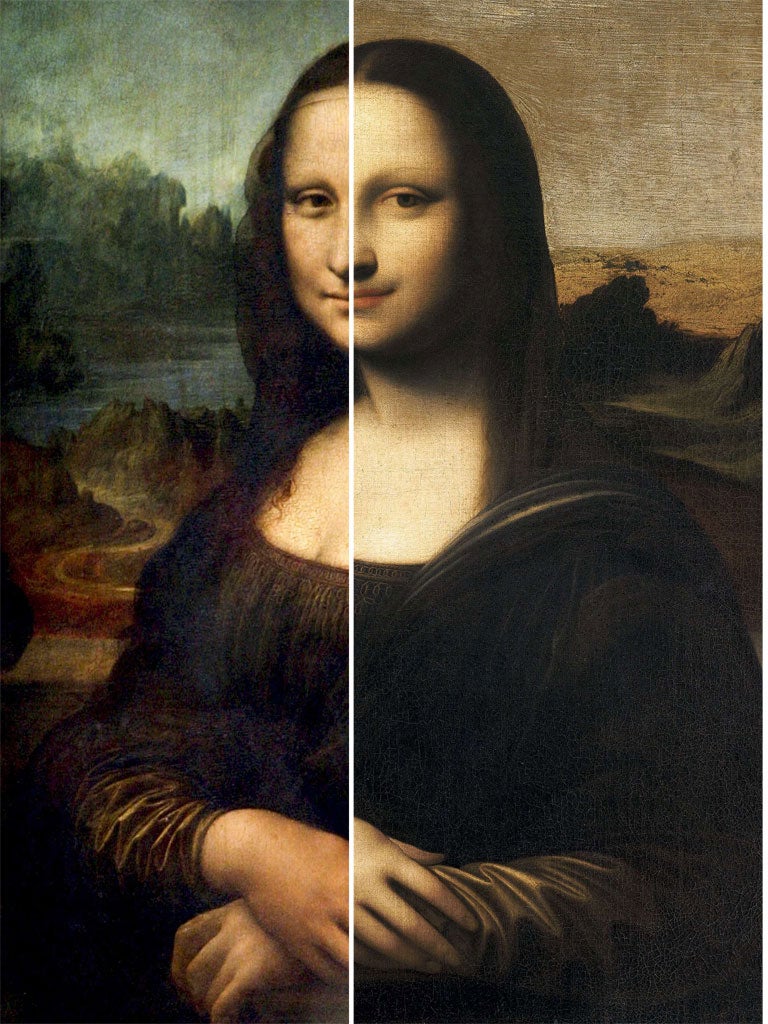Could there be an earlier version of the Mona Lisa?
Swiss foundation unveils what it claims is 1505 painting by Leonardo – with a UK link

Your support helps us to tell the story
From reproductive rights to climate change to Big Tech, The Independent is on the ground when the story is developing. Whether it's investigating the financials of Elon Musk's pro-Trump PAC or producing our latest documentary, 'The A Word', which shines a light on the American women fighting for reproductive rights, we know how important it is to parse out the facts from the messaging.
At such a critical moment in US history, we need reporters on the ground. Your donation allows us to keep sending journalists to speak to both sides of the story.
The Independent is trusted by Americans across the entire political spectrum. And unlike many other quality news outlets, we choose not to lock Americans out of our reporting and analysis with paywalls. We believe quality journalism should be available to everyone, paid for by those who can afford it.
Your support makes all the difference.Mona Lisa's smile has enthralled visitors to the Louvre for generations but yesterday the focus shifted to Geneva, where a Swiss foundation unveiled what it said was an earlier version of Leonardo da Vinci's masterpiece.
The work, known as the Isleworth Mona Lisa, was publicly exhibited by the Mona Lisa Foundation which claims that 35 years of research, numerous tests and mathematical comparisons have led experts to conclude that it predated the Louvre painting by 11 to 12 years.
Stanley Feldman, an art historian, whose book Mona Lisa: Leonardo's earlier version was published yesterday, insisted that all the evidence suggests that the work was the first Mona Lisa.
"We have investigated this painting from every relevant angle and all the accumulated information points to it being an earlier version of La Giaconda in the Louvre," he said.
The foundation, which has been working with the anonymous owners of the Isleworth Mona Lisa, claims that the younger Mona Lisa was probably painted around 1505.
The painting was discovered in 1913 by the collector Hugh Blaker who found it in a manor house in the west of England where it had hung unnoticed for a century. Mr Blaker took the painting back to his home in the London suburb of Isleworth.
When Mr Blaker died in 1936, the painting was bought by the American collector Henry Pulitzer. When he died in 1979, the painting was passed on to his Swiss business partner and on her death in 2010 it was bought by an international consortium.
The existence of the Isleworth painting has been known for decades and Feldman's book reveals how there was speculation about the painting's possible Leonardo connection in the early 1900s.
His claims are backed by the leading Italian Leonardo specialist, Alessandro Vezzosi, and the America-based Renaissance expert, Carlo Pedretti.
However other Leonardo specialists remain highly sceptical. "The Isleworth Mona Lisa mis-translates subtle details of the original, including the sitter's veil, her hair, the translucent layer of her dress, the structure of the hands," insisted Martin Kemp, an Oxford University professor and an acclaimed authority on the Renaissance painter.
"The landscape is devoid of atmospheric subtlety. The head, like all other copies, does not capture the profound elusiveness of the original."
Mona Lisa
Leonardo's preferred medium was wood, not canvas which the Isleworth version is painted on.
Art historian Martin Kemp said: "The head, like all other copies, does not capture the profound elusiveness of the original."
The 'Isleworth' Mona Lisa
The Mona Lisa Foundation's researchers claim they can identify Leonardo's brush strokes. Art historian Stanley Feldman said: "It strikes us that in order for that to be so accurate... only the person who did one did the other."
Often imitated: The many copies of an enigmatic smile
There are dozens of copies of Leonardo da Vinci's Mona Lisa which were painted after the work was acquired by the French King François I following the artist's death in 1519.
A 16th-century version, right, was unveiled at Madrid's Prado museum earlier this year. Another hangs in the Walters Art Museum in the American city of Baltimore.
The Mona Lisa developed into a fashion cult after the painting passed into the French royal collection, prompting many artists to copy the work. Women even adopted a Mona Lisa style of dress.
One of the best copies hung outside the office of the director of the Louvre for many years. It was boxed up during the Second World War and labelled the original Mona Lisa. The painting was then sent on a mad dash through France pursued by a Nazi art theft squad. They finally caught up with it, and thought they had managed to steal the original. But the real Mona Lisa is believed never to have left Paris.
Tony Paterson
Join our commenting forum
Join thought-provoking conversations, follow other Independent readers and see their replies
Comments